4 Types of Sand for Pavers (With Pictures)
-

- Last updated:
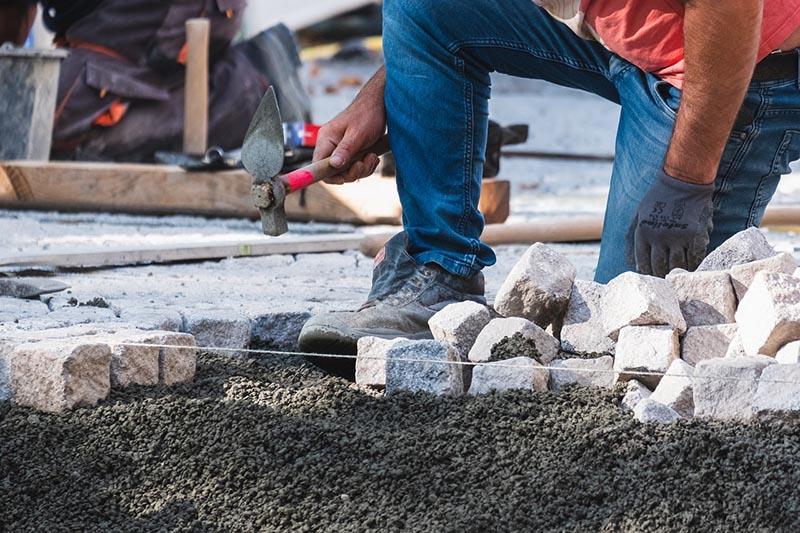
Sand is used as a cushion in the installation of pavers. It acts as a bedding on which pavers are laid and is also used on the joints to bind them together. It also prevents the growth of weeds. However, these functions are carried out by different sand varieties. This is why homeowners tend to be confused about which sand is ideal for joints and bedding.
This article highlights the different types of sand you can use on pavers, their benefits, and what to consider when choosing one for your project. Read on for deeper insight.
The 4 Types of Sand for Pavers
1. Polymeric Sand
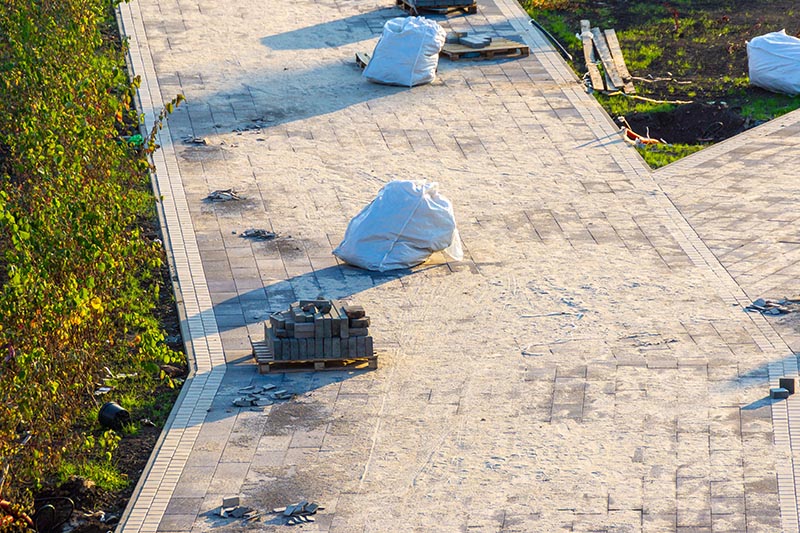
| Composition: | Medium grained |
| Primary Use: | Foundational base and paver joints |
Polymeric sand is essentially a sandy, granular material that is used within the joints and cracks between pavers to interlock the units and preserve the integrity and beauty of the stone pavers.
The process of installing pavers with polymeric base sand starts by adding a water-activated polymer to the sand. After the material is added to the paved surface, water is added to the sand, causing the polymers to harden. This helps secure the sand into position.
Polymeric sand is compo binding additives such as silica which reduce the amount of water seeping between the pavers into the base layer. This makes the base foundation under the pavers intact and sturdy.
Most builders prefer using polymeric sand as a paver’s base material because it is durable, so much so that you can power wash the surface, but with care. Due to its durability, polymeric sand doesn’t need to be replaced, even after exposure to extreme weather conditions such as heavy rainfall. Water never seeps under the paving stones. This also reduces the likelihood of your pavers moving as well as prevents water from removing the base sand, which would have otherwise caused the paver stones to sink.
Polymeric sand may not guarantee that it can prevent weeds from growing on your paved surface, but it can help considerably. As a base material, ordinary sand is more inviting when compared to polymeric sand as a habitat for weeds.
Generally, polymeric sand will ensure that your pavers remain in tip-top condition for years to come.
- Improved durability
- Is not washed away by heavy rain
- Is used as a weed deterrent
- Acts as an ant deterrent
- Different color variations like shades of beige and gray
- Polymeric sand will not be able to bind the pavers properly
- If joints are too wide, the sand will not be able to fill in the gaps
- Can cure permanently if excess is not removed
2. Washed Concrete Sand
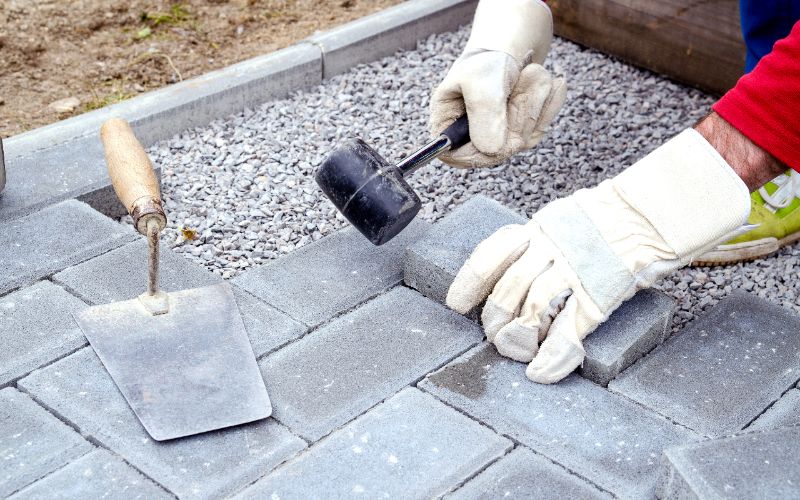
| Composition: | Coarse-grained |
| Primary Use: | Foundational base |
Washed concrete sand is also a suitable sand for creating a foundational base for paver installation. It is composed of large particles and is extremely coarse. It is mostly used in paver installation because it can be uniformly compacted and has good water drainage.
During the installation process, washed concrete sand lifts slightly between the joints while leveling, thus securing them into place. This also prevents water from seeping underneath the pavers and dislodging them.
Some builders may opt to use washed concrete sand with joint sand in a bid to save on costs. They could also combine the two to avoid using two different materials when installing pavers.
- Excellent water drainage
- Allows for a smooth and level finish
- Can be used with joint sand to reduce construction costs
- Readily available
- Is easy to remove
- Requires frequent maintenance
3. Mason’s Sand

| Composition: | Fine grained |
| Primary Use: | Used on paver joints |
Mason’s sand is commonly used in paver joints to interlock them. It is considered the best type of sand for standard paver joining because it is composed of fine particles that create a tighter and less permeable layer tolerant to run-off water.
Despite being a good paver base sand material, you still have to regularly inspect your pavers to determine when it’s time to refill the sand. Fortunately, different companies have been developing binding products that help mason’s sand remain in position for longer.
If you opt to use mason’s sand as your base material, you should definitely research these binding products to ensure your pavers service you for longer.
- Is not affected by heavy rainfall
- Creates tight joints between the pavers
- Requires regular maintenance
4. Joint Sand
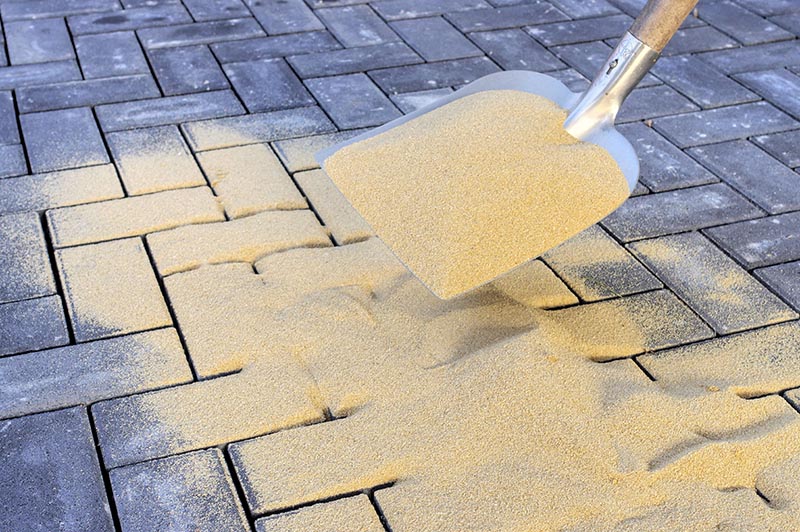
| Composition: | Fine grained |
| Primary Use: | Joining pavers |
Joint sand is mainly used between paver stones to help in the interlocking process. It is extremely stable and helps prevent water from seeping under the pavers and shifting under pressure.
Furthermore, paver joint sand blocks out insects and pests as well as prevents weed growth between the pavers.
When using this material, ensure that you fill the gaps as needed so that your pavers look their best for longer.
- Prevents water from seeping and destroying the paver’s foundational base
- Is very stable
- Insect and pest repellent
- Prevents weed growth on paver joints
- Is costly
- Can cause staining on pavers if not wiped before setting
Types of Sand Ideal for Pavers
If you opt to upgrade your outdoor space with a paver, it’s pertinent that you choose a base sand that is suitable for the job. The base sand you choose will determine if your pavers remain level and smooth or get uneven with time. An ideal base sand should have the following qualities:
- Should allow proper water drainage
- Have an appropriate thickness
- Should be durable enough to support the force and weight the pavers will have to handle
Most people have a general idea about the concept of laying stone pavers on a bedding of sand. What some may not know is that the sand needs to be granular and coarse. When the sand is compacted, its edges grind together, thus locking sand in place. This helps prevent movement and erosion.
Concrete sand is a viable base material and works quite well. However, builders sometimes opt to use mason sand instead. Unfortunately, these two types of sand have some drawbacks, which include washing away when exposed to a heavy downpour. This is perhaps why polymeric sand was developed. It can keep everything in place and hold its form.
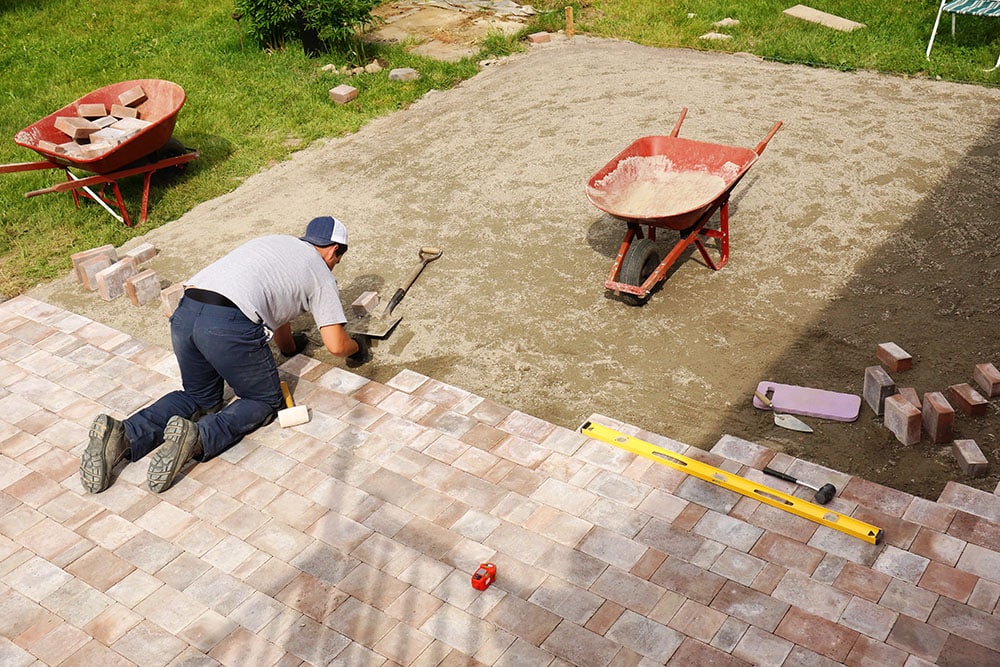
What to Consider When Choosing Sand for Your Pavers
As mentioned earlier, almost all kinds of sand can be used to lay pavers, but not all of them are suitable. Initially, builders preferred to use concrete sand because of its durability and high quality.
Other materials like mason’s sand were also used but they weren’t very durable and cracked easily under pressure.
However, since polymeric sand was developed, it is recommended by most experts and is the most commonly used in paver installation. It is more durable, prevents weed growth, and has better drainage.
Below are some important things to consider when choosing sand as a base material for your pavers.
Sand Consistency
To create a strong and durable foundation base for your pavers, you will need the right sand consistency. Coarse sand is the best base material for pavers because it allows tight compaction, is stronger, and creates a flatter surface.
Do not combine coarse sand and fine sand as you lay your pavers. Ensure that all of them are installed with coarse sand all through.
Longevity
We all want our pavers to look their best with minimal maintenance for a long duration. Thus, we will want to choose a base sand that is strong enough to lock the paver stones into position.
Polymeric sand provides a durable bond unmatched by other sand varieties. It is suitable for the foundation of a backyard patio or walkway if you want it to last for longer.
However, using this material on pavers that are only intended for use for one or two years is a total waste of money and time. Also, removing the pavers will also be much harder in the future.
Sand Thickness
The thickness of the sand used in laying pavers also matters as this is what secures your pavers into place and determines their durability and longevity. Sand suitable for use with pavers shouldn’t exceed a 1–1.5 inches thickness after leveling and smoothing the surface.
A thicker layer will make the foundation base soft, causing the paver stones to move out of position or sink. The thickness of the base sand will also affect the time required for paver application.
Some builders prefer washed concrete sand because its thickness is within the set parameters for paver installation. The thickness of polymeric sand is also suitable when laying pavers for your patio.
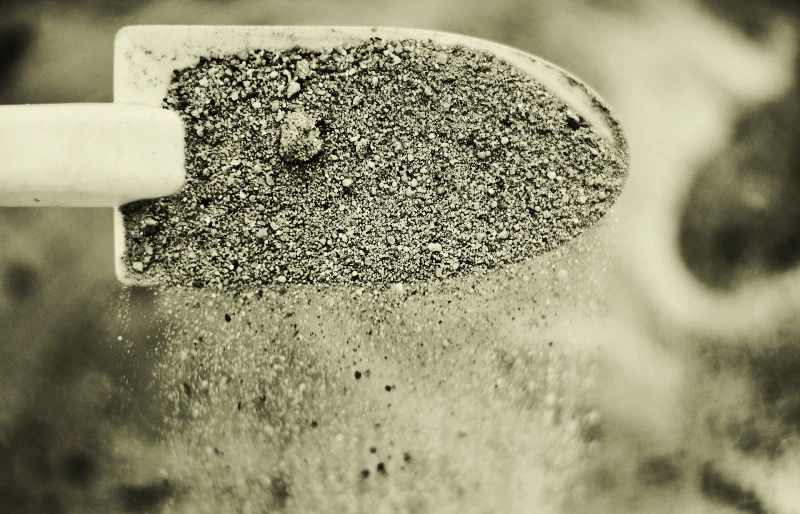
Coverage
Perhaps one of the most difficult parts of any landscaping project is figuring out the number of materials required for the project. The coverage of your chosen base sand will be affected by factors such as joint width, package size, and recommended thickness of the paver stones.
Setting Time
The amount of time required to set the base foundation will also affect the type of sand you choose for your paver installation project. For instance, even though polymeric sand can create strong and durable pavers, it needs to be activated and set before it forms a strong bond.
Moreover, not only should you protect your freshly installed paver joints from the rain while it sets, but you should also ensure that your working area is dry before adding polymeric sand. This tends to create scheduling issues, especially for those living in rainy areas.
Maintenance
No matter what type of sand you opt to use for the paver application, it will eventually erode over time. This likelihood of erosion is even higher if the pavers are regularly exposed to rain, wind, and changing environmental temperatures. This will require you to perform regular maintenance to keep your pavers looking fresh and visually appealing.
Fortunately, you can restore the stability and look of your pavers by adding a new layer of sand between the joints. Among the sand types mentioned above, polymeric sand requires the least maintenance services.
Yet, repairing damages on joints filled with polymeric sand can be quite difficult. Usually, the repair and maintenance process of chipped or cracked polymeric sand includes removing and replacing a whole paver joint. This is more labor and time intensive than when filling up with concrete or paver joint sand.
Conclusion
Sand is an essential material in the installation of pavers. It not only helps compact the paver stones together, but it also prevents weed growth and prevents water from leaking into the base foundation and creating issues such as paver movement or sinking.
The types of sand commonly used in paver installation are polymeric, washed concrete, masons, and joint sand.
So, if you are planning to build a patio, driveway, or walkway using pavers, ensure that you choose the right sand type for your project. We hope the considerations to keep in mind when choosing sand for pavers, as highlighted in this article, will help you get started.
Featured Image Credit: René Bittner, Pixabay
Contents

